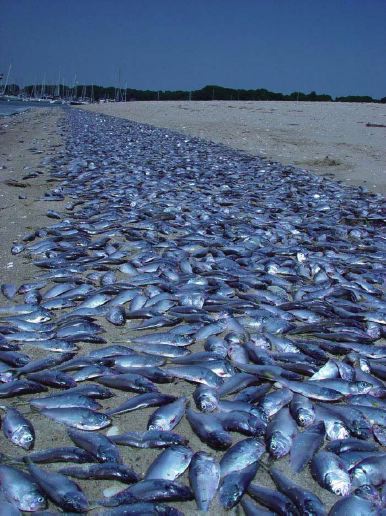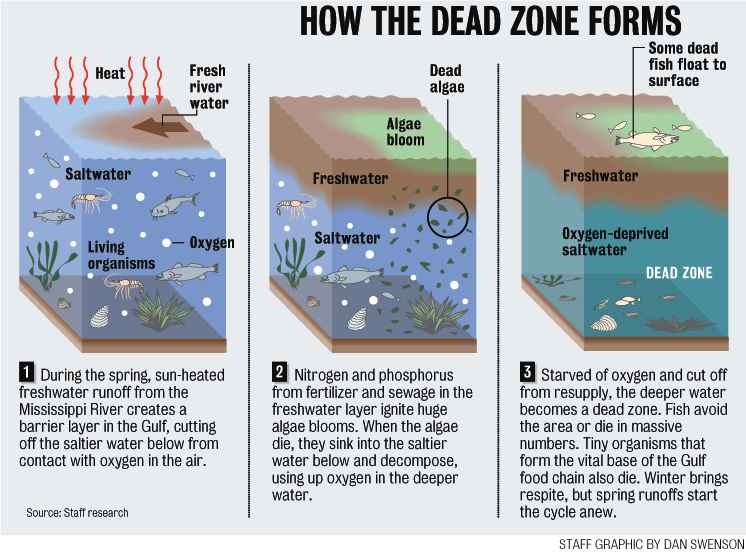
SAN FRANCISCO -- Dead zones where fish and most marine life can no longer survive are spreading across the continental shelves of the world's oceans at an alarming rate as oxygen vanishes from coastal waters, scientists reported Thursday.
The scientists place the problem on runoff of chemical fertilizers in rivers and fallout from burning fossil fuels, and they estimate there are now more than 400 dead zones along 95,000 square miles of the seas - an area more than half the size of California.
The number of those areas has nearly doubled every decade since the 1960s, said Robert J. Diaz, a biological oceanographer at the Virginia Institute of Marine Science.
"Dead zones were once rare, but now they're commonplace, and there are more of them in more places," he said.

Diaz and Rutger Rosenberg, a marine ecologist at Sweden's Göteborg University, have just completed a global survey of the imperiled areas, and their report appears today in the journal Science.
The phenomenon that drives life away from so many coastal habitats is called hypoxia - the lack of enough oxygen in bottom waters for fish and other valuable marine life to thrive, the report notes.
The causes of hypoxia
Hypoxia is caused by tons of nitrogen and phosphorus in fertilizers that run from farms and spill into the seas from rivers and streams as well as by fallout from power plants that burn fossil fuels.
The chemicals become prime nutrients that fertilize rich blooms of microscopic algae near the surface layers of coastal waters. The algae eventually die, sink to the bottom layers of the ocean and become food for masses of bacteria that decompose and consume the oxygen around them. The result is the dead zone, devoid of most marine life forms.
Read the rest of the article here.
Preventive steps can be taken, citing these examples:
- European nations along the Rhine agreed to halve discharged nitrogen levels, reducing the discharge into the North Sea.
- Planting new forests and grasslands will help soak up excess nitrogen, keeping it out of waterways.
- Requiring vehicles to reduce nitrogen emissions.
- Fostering alternative energy sources that are not based on burning fossil fuels.
- Better sewage treatment would reduce nutrient discharges to coastal waters.



No comments:
Post a Comment